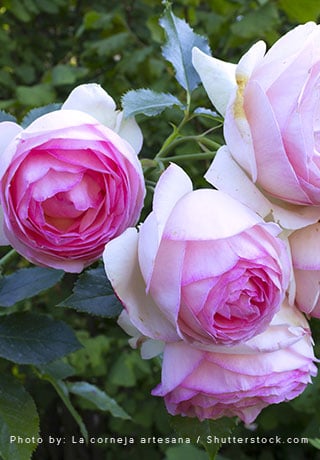Pruning Climbing Roses
Keep your climbing roses healthy and in shapeMany of the same pruning rules apply to climbing roses as hybrid teas or floribundas, but there are a few differences. Climbers have two types of canes: main and lateral. The main canes come directly from the base and lateral canes that produce the flowers. With climbers, there is no need to prune to outward-facing buds, as shaping them in that way isn’t necessary.
Learn more about how to grow climbing roses.
WHEN TO PRUNE CLIMBING ROSES
Spring: Pruning of climbers in early spring should be very light, removing only winter-killed wood on canes and branches.
For reblooming varieties, deadhead the sideshoots after the first bloom in spring to promote the next wave of flowers.
Summer: The best time to perform major pruning (removing one or more canes) on a climber is right after it has finished flowering. The strong new canes that sprout afterward will then have time to mature and produce roses the next year. Without periodic removal of its oldest canes, a climber will become an overgrown thicket.
Any time: Lateral canes can be pruned at any time to keep the climber in shape.
HOW TO PRUNE OUT MAIN CANES
Cutting out the whole length of a thick, woody, old cane is no simple matter, because each cane’s innumerable branches get tangled with those of neighboring canes. Resist the temptation to start at the top, where it’s easiest to cut with ordinary pruning shears: It’s also easy to clip off what you think is a branch of the old cane, only to realize that you’ve severed the intertwined stem of a desirable young cane.
Instead, wielding heavy lopping shears, begin at the base of an old cane and remove only as much of it as you can easily extract. Then lay down the shears and wait. Within an hour, the leaves above where you’ve cut will begin to wilt, making it easier to tell which of the tangled branches belong to that cane. Clip out branches with wilted foliage until every bit of the cane is gone.
Most climbers can then flourish for several years before needing another major pruning to stimulate new growth. Exactly when depends on the vigor of each variety and how you have it trained. For example, if a rose fanned out against a wooden lattice has five major canes, you might renew it on a five-year cycle by removing only the oldest, thickest cane each summer, after flowering. If the rose overgrows the trellis on that schedule, take out two canes each summer. A rose climbing a large arbor or scrambling through a tree will need less pruning; taking out the oldest cane every other summer should be enough.
RELATED:
Rose Garden Design
How to Prune Roses

